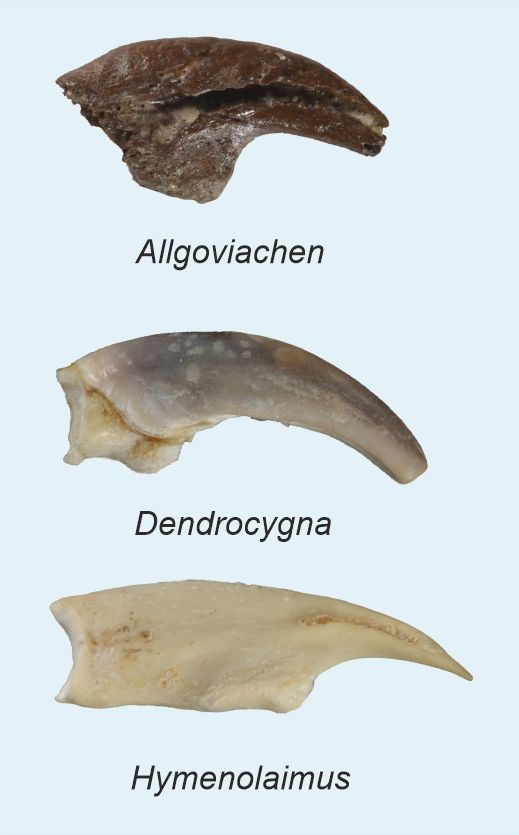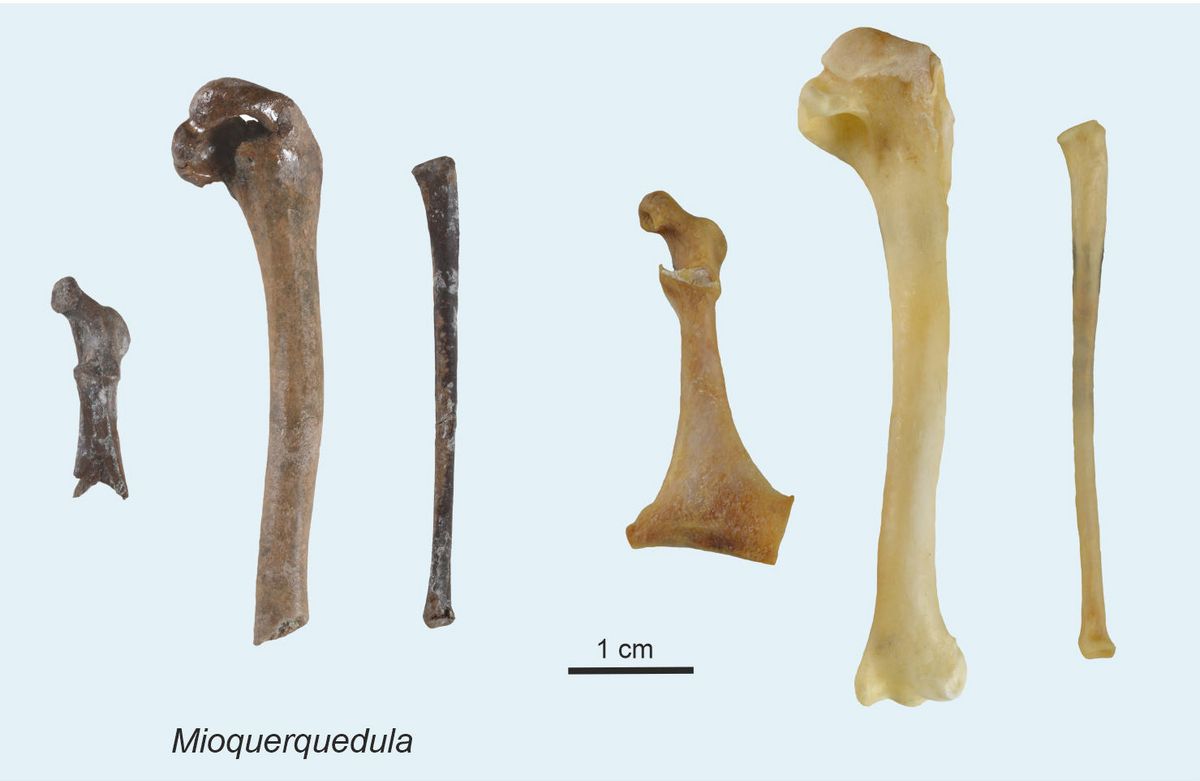Four species of waterfowl have been found at the Hammerschmiede site. Allgoviachen tortonica is the largest, weighing about two kilograms and reaching 70 centimeters in body length. The scientific name reflects the Allgäu region in which it was found, and the Tortonian epoch from which the find originated. "Its phylogenetic position is currently unresolved," Mayr says, "Despite similarities to living shelducks and to the knob-billed duck, a number of primitive features suggest that Allgoviachen is not closely related to any of the waterfowl living today."
Unlucky duck may have taken an unlucky dip
The present-day clay pit was traversed by rivers several million years ago. The complete Allgoviachen leg found by the researchers had been severed in the area of the thigh. This raises the possibility that it could have been left over from a meal made by one of the nearly meter-long snapping turtles that populated the Hammerschmiede river in great numbers. "It is consistent with the leg being bitten off while Allgoviachen was swimming. The complete preservation of all bones backs up that scenario," explains excavation director Thomas Lechner.
Usually, skeletal elements belonging to an individual bird are transported by the river over distances of many meters. This was the case with the wing and coracoid bones of a very small duck species, Mioquerquedula. These bones were found over a distance of ten meters in the course of the excavation. Mioquerquedula is a true dwarf, smaller than the smallest dwarf waterfowl living today. Its body was about 25 centimeters long and it probably weighed only 300 grams. Present-day pygmy waterfowl such as the blue-billed teal (Spatula hottentota) and the African pygmy goose (Nettapus auritus) live exclusively in the tropical zones of Africa.
"The latest finds once again underline the worldwide importance of the Hammerschmiede clay pit for the study of the animal world in the time between twelve and eleven million years ago," says Professor Böhme. "So far, we have found more than 140 different vertebrate species at this site, including the first upright-walking ape, Danuvius
guggenmosi," Böhme adds. Under her direction, excavations at the Hammerschmiede have been taking place since 2011. They have been financially supported by the state of Bavaria since 2020.
Publication:
Gerald Mayr, Thomas Lechner, Madelaine Böhme: Nearly complete leg of an unusual, shelduck-sized anseriform bird from the earliest late Miocene hominid locality Hammerschmiede (Germany). Historical Biology, https://doi.org/10.1080/08912963.2022.2045285
Kontakt:
Dr. Gerald Mayr
Senckenberg Research Institute, Frankfurt
Ornithology section
+49 69 75 42 13 48
gerald.mayrspam [email protected]
Prof. Dr. Madelaine Böhme
University of Tübingen
Senckenberg Center for Human Evolution and Palaeoenvironment
+49 7071 29-73191
m.boehmespam [email protected]








